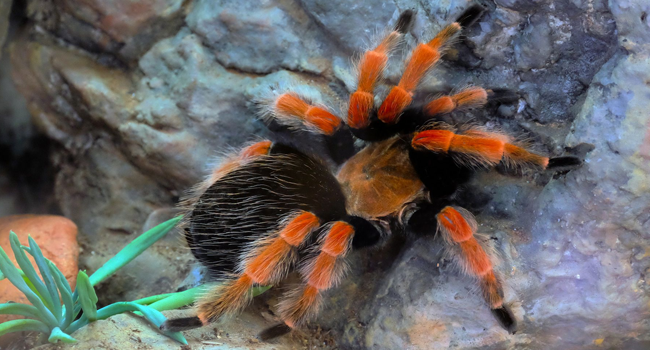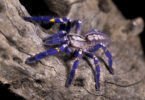Photographing tarantulas can be an enthralling and challenging experience. These intriguing creatures, with their unique appearance and behaviors, offer an exciting subject for photography. In this article, we will explore Tarantula Photography
Introduction
Tarantulas are a diverse group of arachnids in various parts of the world. Their striking appearance, with hairy bodies and sharp fangs, can make for captivating photographs. To create stunning shots, you’ll need the right equipment, patience, and some fundamental techniques.
The Fascinating World of Tarantulas
Before we dive into photography tips, let’s take a moment to appreciate the fascinating world of tarantulas. With over 900 species, these arachnids exhibit various colors, sizes, and behaviors. From the vibrant Mexican Redknee to the enigmatic Goliath Bird-eater, each tarantula is unique.
Equipment You’ll Need
- Camera
To begin your tarantula photography journey, you’ll need a good quality DSLR or mirrorless camera. These cameras give you more control over settings, allowing you to capture the finer details.
- Lens
A lens is ideal for capturing close-up shots of tarantulas. It lets you get up close without disturbing them.
- Tripod
Using a sturdy tripod is essential to maintain a stable shot, especially when shooting in low-light conditions.
- Lighting
Natural light often works best when photographing tarantulas. However, you might need additional lighting sources, such as a ring light or softbox, to illuminate your subject adequately.
Setting the Stage: Tarantula Habitat
Creating a natural and captivating environment for your tarantula subject is crucial. Mimic their native habitat using substrates like soil or moss. Add small props like leaves and twigs to make the setting more authentic.
Patience is Key
Tarantulas are not the most active creatures. They may stay still for hours or even days. Patience is your best ally in tarantula photography. Spend time observing their behavior and waiting for the right moment.
Techniques for Capturing Stunning Tarantula Shots
- Composition
Consider the rule of thirds and leading lines to compose your shots. Try various angles, including top-down and eye-level views, to capture the tarantula’s character.
- Depth of Field
Use a wide aperture (small f-number) to achieve a shallow depth of field. This blurs the background, drawing attention to your tarantula subject.
- Focus
Tarantulas have intricate patterns and textures. Ensure your focus is sharp on their eyes, fangs, or hairy legs to highlight these details.
- lighting
Soft, diffused lighting works best for tarantula photography. Avoid harsh shadows, which can distract from your subject.
- Perspective
Experiment with different angles and perspectives. Get low and shoot at their eye level for a unique and engaging shot.
Overcoming Challenges
- Low Light Conditions
In low light, use a higher ISO setting, a wider aperture, or additional lighting to brighten your subject. Be mindful of not overwhelming the tarantula with bright lights.
- Shy Tarantulas
Some tarantulas can be pretty shy. Spend time gaining their trust and ensure you don’t make sudden movements to avoid startling them.
- Speedy Tarantulas
Certain species are fast movers. You must be ready and be quick on the shutter to capture them in motion.
- Editing and Post-processing
Once you’ve captured your tarantula shots, enhance them with post-processing. Adjust colors, contrast, and sharpness to make your images pop.
- Safety Precautions
It’s essential to treat tarantulas with care and respect. Always prioritize their well-being over capturing the perfect shot.
Conservation and Awareness
Tarantulas play vital roles in ecosystems, and their survival is essential. You can use your photographs to educate others about the beauty and significance of these arachnids and advocate for their protection.
The Joy of Tarantula Photography
In the world of photography, there are countless subjects to explore, but tarantula photography offers a unique and mesmerizing experience. Capturing the stunning shots of these incredible arachnids allows you to witness the beauty of the natural world up close. So, whether you’re an amateur or a seasoned photographer, tarantula photography is an adventure worth embarking upon.
Tarantula Photography: An Ever-Evolving Art
Photography is a constantly evolving art form, and tarantula photography is no exception. As you continue your journey, keep exploring new techniques, equipment, and styles. Be open to experimentation and never stop learning. Different lighting setups, angles, or post-processing approaches can add fresh dimensions to your tarantula images.
Sharing Your Passion
Once you’ve built a collection of stunning tarantula photographs, consider sharing them with a broader audience. You can create a photography portfolio or website to showcase your work.
Conservation through Photography
Tarantulas, like many other creatures in the natural world, face various threats, including habitat loss and the pet trade. As a tarantula photographer, you can use your images to advocate for the conservation of these fascinating arachnids. By highlighting their beauty and ecological significance, you can contribute to raising awareness and support for tarantula conservation efforts.
Joining Photography Communities
Photography is not just about taking pictures; it’s also about connecting with a community of like-minded individuals. There are numerous online photography forums and social media groups where you can share your work, seek advice, and learn from others. These communities provide valuable feedback and inspiration to help you grow as a photographer.
The Endless Wonders of Tarantulas
Tarantula photography is not just about capturing stunning shots but also about gaining a deeper appreciation for these remarkable creatures and their ecosystems. Each tarantula species has its unique story to tell through your lens, and the possibilities for creative exploration are endless.
Conclusion
In conclusion, tarantula photography is a captivating journey into the world of arachnids and the art of photography. Tarantula photography can be a rewarding endeavor for nature and photography enthusiasts alike. By following these tips and showing patience and respect for these fantastic creatures, you can capture stunning shots that showcase the beauty of tarantulas.
So, whether you’re a beginner or an experienced photographer, don’t hesitate to dive into the mesmerizing world of tarantula photography. Remember to approach these creatures respectfully, prioritize their well-being, and use your skills to convey their enchanting story to the world. Happy shooting!
FAQs
-
Is it safe to get close to tarantulas for photography?
Photographing tarantulas can be safe with caution and respect for the arachnids. Avoid sudden movements and prioritize the tarantula’s well-being.
-
What time of day is best for tarantula photography?
Natural light during the day is often the best for tarantula photography, as it showcases their details without overwhelming them.
-
Do I need a specialized camera for tarantula photography?
While a macro lens is helpful, you can start with a good-quality DSLR or mirrorless camera and gradually invest in more specialized equipment.
-
How do I approach a shy tarantula for a photo?
Approach slowly and avoid making sudden movements. Spend time observing the tarantula to gain its trust.
-
What should I do if a tarantula becomes agitated during a photoshoot?
If a tarantula appears agitated or stressed, it’s best to stop the photoshoot and let the arachnid calm down in its habitat.
-
How can I make my tarantula photography unique?
To make your tarantula photography stand out, experiment with different angles, lighting, and compositions. Try to capture the tarantula’s personality and quirks in your shots.
-
Can I photograph wild tarantulas, or should I stick to captive ones?
Photographing captive tarantulas is generally safer and more ethical. Wild tarantulas can be unpredictable, and disturbing them in their natural habitat can harm both the tarantula and the ecosystem.
-
What is the ideal distance to maintain when photographing tarantulas?
Maintain a respectful distance, and use a telephoto lens or a macro lens with a long focal length to get close-up shots without disturbing the tarantula.







